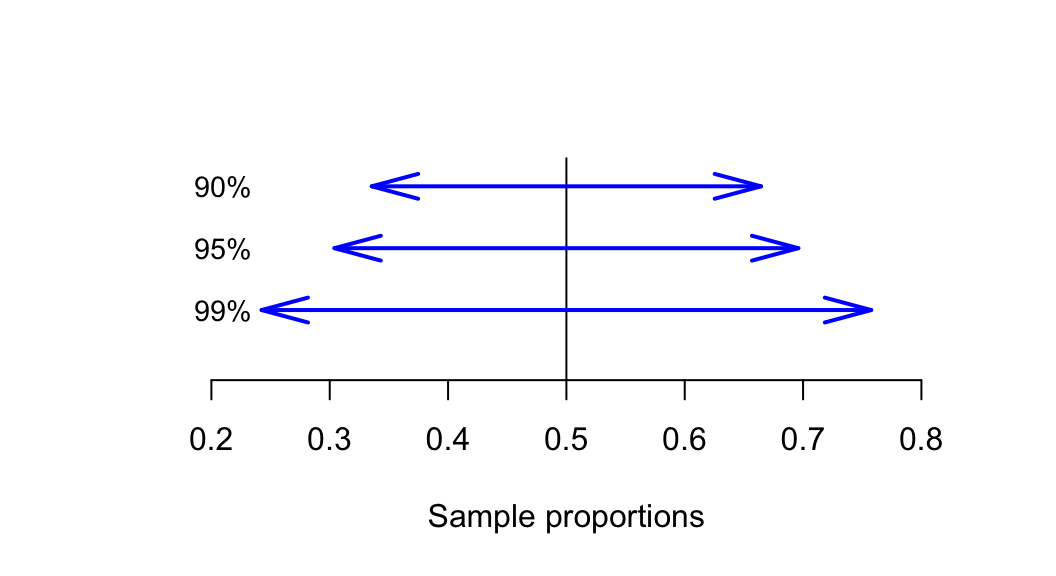20.2 Sampling intervals: Known proportion
The possible values of the sample proportions can be described by an approximate normal distribution, as just discussed. This enables the 68–95–99.7 rule to be applied; for example, about 68% of the time with sets of 25 rolls, the sample proportion of even rolls will be between give-or-take one standard deviation (that is, give-or-take 0.1). So, about 68% of the time, the proportion of even rolls in a set of 25 rolls will be between:
- and
- .
Similarly, about 95% of the time, the proportion of even rolls will be between give-or-take two standard deviations, or between:
- and
- .
This interval tell us what values of are likely to be observed in samples of size 25. Most of the time (i.e. approximately 95% of the time), the value of is expected to be between 0.30 and 0.70. (For instance, in the animation above, all ten sets of 25 rolls (or 100%) had a sample proportion betweeen 0.30 and 0.70.)
More formally, the sample proportion is likely to lie within the interval
where is the standard error of the sample proportion (calculated using Eq. (20.1)). The symbol ‘’ means ‘plus or minus,’ or ‘give-or-take.’
The multiplier depends on how confident we wish to be that the interval contains the value of .
For a 95% interval—the most common level of confidence—the multiplier is approximately 2, based on the 68–95–99.7 rule: Approximately 95% of observations are within two standard deviations of the value of (the mean of the normal distribution in Fig. 20.1).
That is, the approximate 95% interval is:
For a 90% interval, either tables or a computer would be used to find the correct multiplier, since the 68–95–99.7 rule isn’t helpful.
In practice, 95% intervals are the most common, and we’ll use a multiplier of to find an approximate 95% interval when computing the interval without using software. Software can be used for any other percentage interval (or for an exact 95% interval).
In general, higher confidence means wider intervals (Fig. 20.2), since wider intervals are needed to be more certain that the interval contains .

FIGURE 20.2: To have greater confidence that the interval will include the sample proportion, the interval needs to be wider